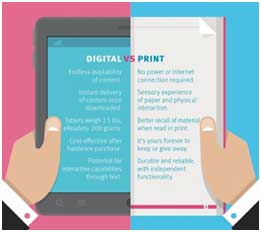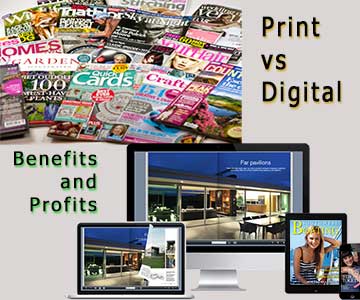It’s supposed to be the end of newspapers, according to naysayers who have been predicting their ultimate demise for years. But the facts prove the newspaper industry is growing and transforming rather than dying. Of course, there are always bumps in the road to innovation, but as it turns out, we’re actually in the midst of a promising and exciting time.
Top businessmen and investors such as Warren Buffet, John Henry and Jeff Bezos are demonstrating that newspapers are still lucrative investments. And despite gloomy predictions, our circulation revenue is actually rising.
We’re experimenting and transforming to match the pace of our innovative and digitally-driven world. Digital and bundled subscriptions accounted for a five percent uptick in circulation revenue in 2012 — the first national rise in circulation revenue since 2003.
Newspaper content is now ubiquitous, available and accessed on every platform and device. Recent Scarborough research also shows that across all print, digital and mobile platforms, a full 70 percent of U.S. adults read newspaper content each week. That’s more than 164 million adults — 144 million of whom, still pick up the print copy.
And despite the common perception that the younger, digitally-native generation has abandoned newspapers, this study shows quite the opposite. Some 57 percent of young adults, ranging in age from 18 to 34, read newspaper content in a given week. This is a strong indication that the industry is still a relevant and vital source of information, even to Millennial, who coincidentally also contribute heavily to the growth of mobile readership, which jumped 58 percent over the last year.

Digital-vs-Print
The reason for this is simple. With the deluge of information available on the Internet, people of all ages rely heavily on sources they trust to provide accurate content and quickly sift fact from fiction.
Newspapers consistently and reliably provide the most up-to-date, accurate and important news. And our audiences recognize this, rating newspapers as the most trusted of all media forms in a recent Nielsen study. While 56 percent say they trust newspapers, 52 percent trust local television and only 37 percent trust social media.
Today’s technology has only proven how valuable this content is by providing a platform to widen the audience for each story, which can now be taken and repeated, shared, tweeted, condensed and emailed countless times a day.
Newspapers have always been the cornerstone of our society, and that did not change with the digital revolution. Ever since the Philadelphia Evening Post first published the Declaration of Independence, our newspapers have continued to unite us as communities and as a nation. News media connects us through stories, keeping us informed on school board decisions, local heroes, national budgets and international conflict.
The public’s right to know is essential to preserving our unique American democracy, and newspapers serve the vital role of independent watchdogs — keeping governments, businesses and other institutions in check. Without a free press that can protect its sources, American democracy will suffer.
The newspaper industry will continue to innovate and transform with the times, just like any other industry. But one thing will never change: Our historic promise to connect, inform, investigate and foster an educated society
– See more at: http://columbiadailyherald.com/sections/opinion/letters-editor/newspapers-evolving-digital-era.html#sthash.wVrtsvJB.dpuf
Print media are losing value to digital. They’re facing a mortal threat from the rise of online publishing. As the value of print media continues to shift to digital, print publications aren’t the autocrat as they once were as digital grabs a heavier and heavier weight, their influence has faded.
This sea change is accelerating a decade old trend. Audiences are losing interest in paying for print products, and they’re moving to the Internet. New technology is finding new and advanced applications as the costs and methods of content distribution intersects with audience demands. This hits traditional media organizations, unlatching business security to a free-fall of print advertising and decline in circulation, sucking the oxygen out of many print business models.
We know that the print vs digital doldrums have been here for quite a while now. But, what exactly are the factors that intensifies this shift in value? CBS Interactive writer and editor, Erik Sherman, gives light on the real reasons why digital media values are outstripping print’s.
- Changing reading habits. It’s not that paper has completely given up the ghost. Even so-called digital natives like college students tend to prefer paper books when it comes to in-depth reading. But daily time spent reading magazines in the U.S. dropped from 20.9 minutes in 2008 to 15.5 minutes in 2013 and may slide to only 10 minutes by 2018. The amount of time spent with online media continues to grow.
- Falling print ad revenue. Investors like money, and a major shift in where ad dollars are flowing is underway. According to Pew’s annual State of the Media report, newspaper ad revenues are down 4 percent, while digital ads are up 18 percent.
- Buying the ad coverage you need. One reason print companies were so profitable is that they were similar to old-fashioned records. If you wanted one song, you had to buy the whole album through forced bundling. Similarly, if you wanted one part of a print publication’s audience, you had to pay for the whole block. When separate regional editions existed, an advertiser might have been able to select a specific area, although at a higher price per reader. Digital is far more flexible in targeting.
- Automation. A growing trend online is called programmatic advertising. It’s a way of automating much of the process of placing ads and also includes the capability of tightly targeting specific individuals that data suggest might be interested in a company’s messages. Doing something like that in print requires direct mail, which is vastly more expensive. Advertisers opt for faster, cheaper and better, and investors follow the money.
- Trying to spot the winners. Of course, investors are always looking for winners. Which companies will ultimately be the digital victors and become the online equivalent of old print giants? Although total digital ad spending is up, individual ads are incredibly cheap. So, making real money online takes a lot of work. Reduce the number of publishers, and the ones left standing will have more leverage in negotiations and can perhaps drive up ad rates and profitability over time.
Read full article on CBS News.
Global Online Publishing helps news organizations and helps keep them informed about why and how to utilize today’s digital platforms. Keep reading to learn how Global Online Publishing creates value and join our multitude of clients who turn the page from their traditional print format and evolve them into a mobile digital solution! We are a full service company. No need for additional staff or training. Contact Us!

